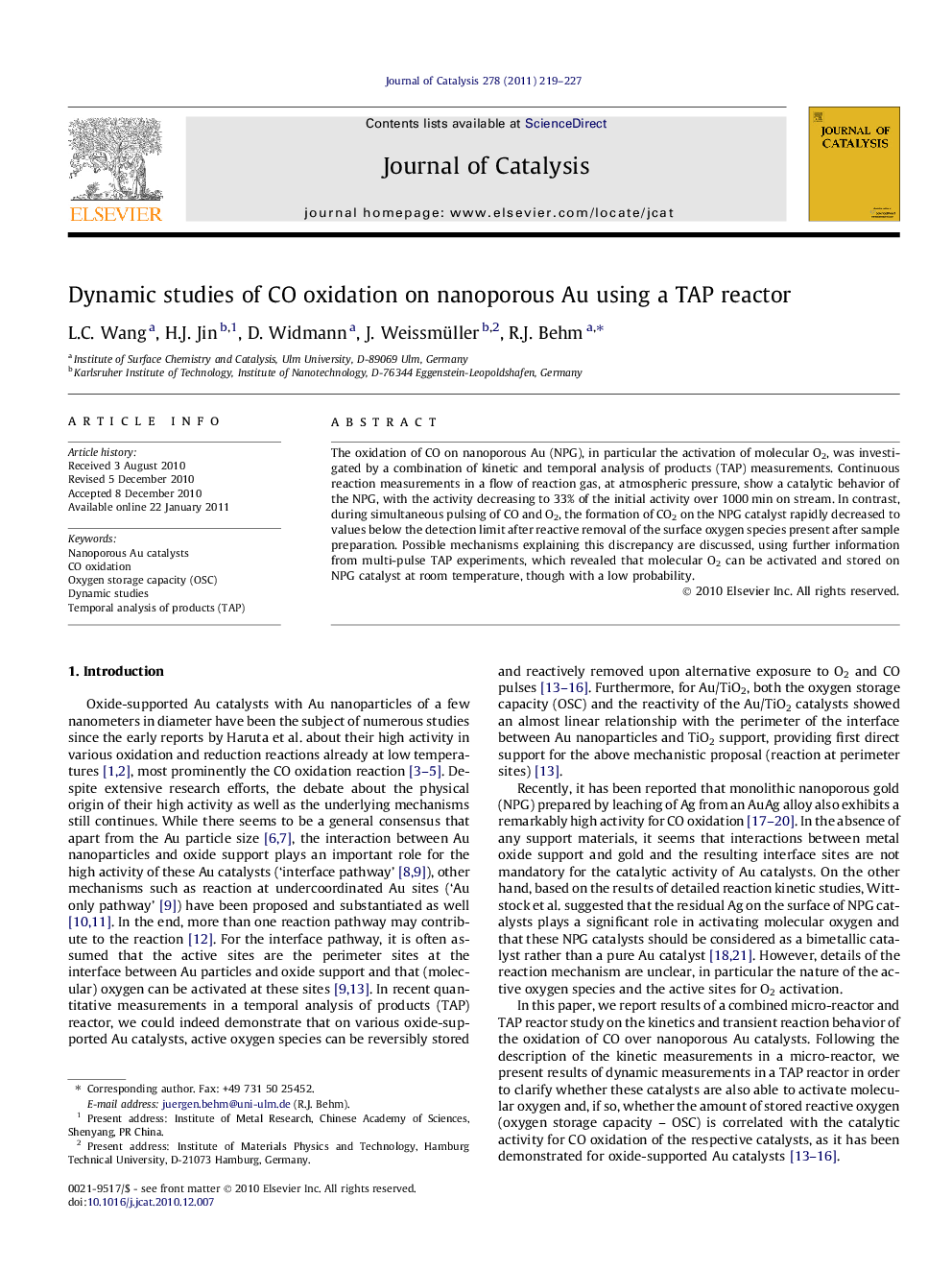| Article ID | Journal | Published Year | Pages | File Type |
|---|---|---|---|---|
| 61755 | Journal of Catalysis | 2011 | 9 Pages |
The oxidation of CO on nanoporous Au (NPG), in particular the activation of molecular O2, was investigated by a combination of kinetic and temporal analysis of products (TAP) measurements. Continuous reaction measurements in a flow of reaction gas, at atmospheric pressure, show a catalytic behavior of the NPG, with the activity decreasing to 33% of the initial activity over 1000 min on stream. In contrast, during simultaneous pulsing of CO and O2, the formation of CO2 on the NPG catalyst rapidly decreased to values below the detection limit after reactive removal of the surface oxygen species present after sample preparation. Possible mechanisms explaining this discrepancy are discussed, using further information from multi-pulse TAP experiments, which revealed that molecular O2 can be activated and stored on NPG catalyst at room temperature, though with a low probability.
Graphical abstractThe oxidation of CO on nanoporous Au, in particular the activation of molecular O2, was investigated by a combination of kinetic and TAP measurements, showing the formation of stable adsorbed active oxygen via dissociative O2 adsorption.Figure optionsDownload full-size imageDownload high-quality image (117 K)Download as PowerPoint slideResearch highlights► Mechanism of oxygen activation and CO oxidation on nanoporous Au (NPG). ► Oxygen is activated at 30 °C on NPG, forming a stable atomically adsorbed species. ► Oxygen activation depends non-linearly on the O2 partial pressure. ► O2 activation/stable Oact formation is rate limiting for continuous CO oxidation.
